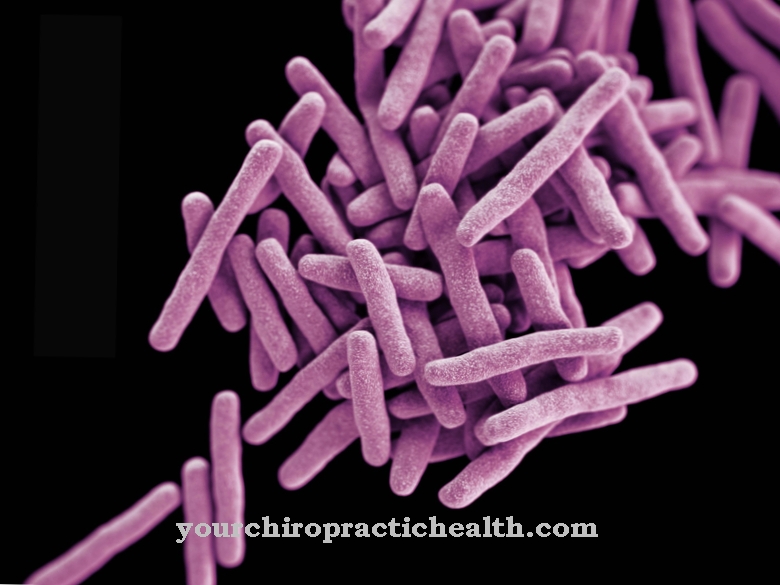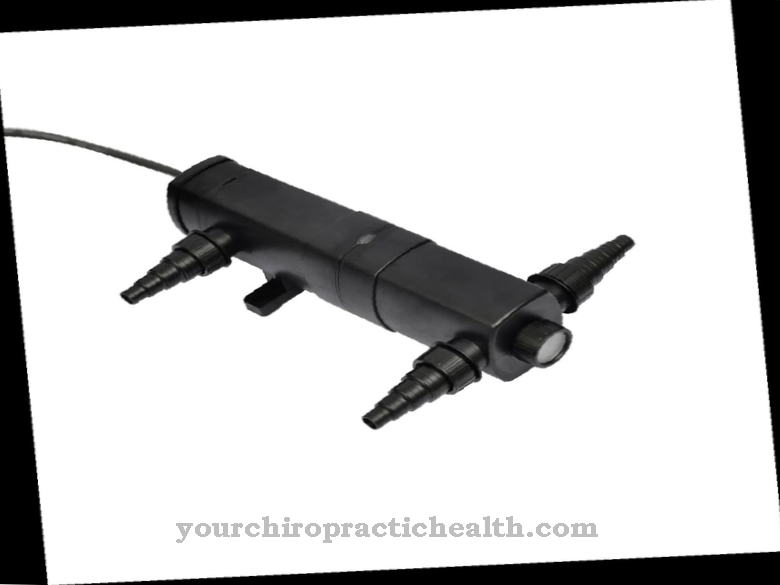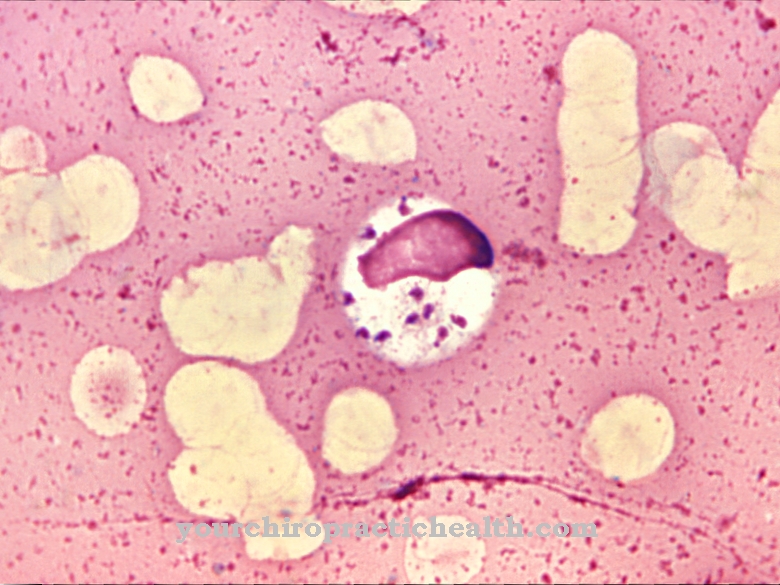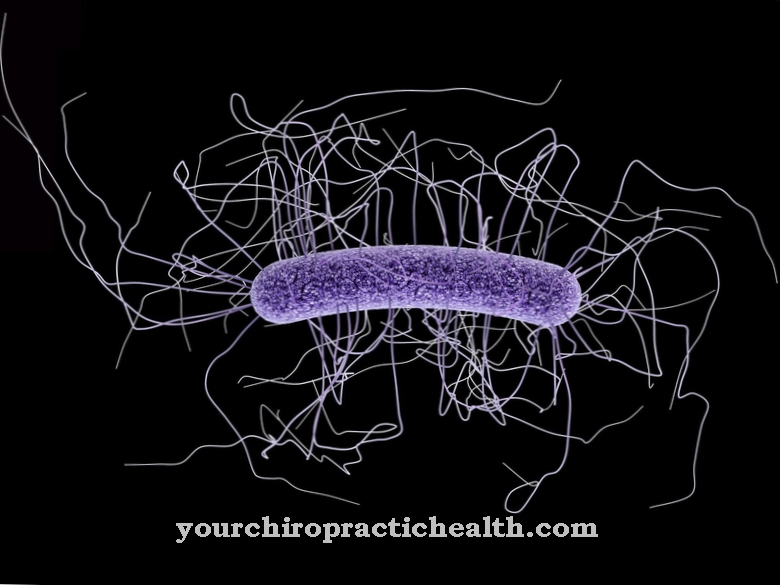Clostridium botulinum is a rod-shaped bacterium that reproduces by forming spores. There are four different subgroups, all of which make up what is known as botulinum toxin. This can also be pathogenic for humans (disease-causing) and trigger poisoning.
What is Clostridium botulinum?
Clostridium botulinum is a gram-positive (reacting to the method of Gram staining), rod-shaped bacteria. It is spore-forming and anaerobic, so it does not use oxygen for its life processes.
There are different groups of the bacterium, each of which produces different types of botulinum toxin. Of the twelve toxin types, five are pathogenic to humans. The botulinum toxin acts on the nervous system and is one of the strongest known poisons. Its effect is based on the inhibition of neurotransmitters (messenger substances) between nerves and muscles, which leads to paralysis. When the poison is neutralized, these form back again.
Occurrence, Distribution & Properties
The bacterium Clostridium botulinum is rod-shaped, gram-positive and spore-forming. It has an anerobic lifestyle, but is quite insensitive to oxygen. There are four different groups in total, which differ significantly from one another biochemically. However, they all form the botulinum toxin, of which there are nine different types (A, B, C1, C2, D, E, F, G, H). Types A, B, F, E and H are pathogenic for humans.
Group 1 of Clostridium botulinum with toxins A, B and F reproduces optimally at a temperature between 35 and 40 degrees Celsius, the spores are heat-resistant up to 112 degrees. Group 2 with toxins B, E and F has its optimal temperature between 18 and 25 degrees Celsius and the heat resistance of the spores is up to a temperature of 80 degrees. Toxin types A and B have a pathogenic effect on humans and are mainly transmitted through self-made canned meat, fish, vegetables and fruit, as well as through processed dishes with pork products.
Types E and F of botulinum toxin are transmitted to humans through fish, seafood and meat. They cause severe food poisoning, but can also multiply as so-called wound botulism in dead tissue or as infant botulism in the intestines of infants. Clostridium botulinum also reproduces very quickly in animal carcasses, sometimes also in plant material with protein components.
The poison can be rendered harmless by heating. The temperature must be 100 degrees Celsius for at least five minutes.
Meaning & function
The botulinum toxin A produced by Clostridium botulinum is also known colloquially as "Botox" and is approved for medical and cosmetic use. It causes muscle paralysis. This property is used in the cosmetic sector for the treatment of wrinkles in the facial area by means of injections. The effects of the botox injections last for about three to six months, and the wrinkles are no longer visible.
In the medical field, botulinum toxin A is used to treat cramps and spastic paralysis. The toxin is also used in medicinal form in the case of excessive sweat or saliva formation. Treatment with botulinum toxin can cause side effects such as infection, bruising, or visual disturbances from local injections.
Illnesses & ailments
The toxin from Clostridum botulinum is one of the most powerful poisons of all. Spores can germinate and toxin production can occur, especially in hermetically sealed preserves containing meat, fish, vegetables and fruits. This applies above all to underheated and homemade canned food. In the production of foodstuffs, the bacterium is prevented from multiplying by heat sterilization or by curing.
Poisoning with botulinum toxin is also known as botulism. This is a reportable poisoning that occurs within two hours to 14 days after consumption of the food containing toxins. The shorter this incubation period, the more severe the course of the disease.
The effect of the poison is based on a blockade of the signal transmission from nerve cells to the muscles. The eye muscles are usually the first to be affected, blurred vision and double vision, the eyes closing and the pupils dilating. In the process, the muscles of the lips, tongue and roof of the mouth are affected. Severe dry mouth, swallowing and speech disorders occur. Symptoms typically show up without a fever.
If the course is severe, the paralysis spreads to the muscles of the internal organs. Diarrhea, vomiting, constipation and abdominal cramps are the result. Death occurs through asphyxiation in the case of paralysis of the respiratory muscles or through cardiac arrest in the case of paralyzed heart muscle. The death rate is highest in the case of poisoning with botulinum toxin type A, followed by type E and type B. Treatment is mainly through the administration of antidotes, which lowers the mortality from over 90 percent to around 15 percent. The paralysis often takes months to go away.
In infant botulism, the ingestion of spores through the intestines leads to poisoning. Up to around one year of age, the body produces too little stomach acid to kill the Clostridium botulinum spores ingested with food. These then germinate in the intestine and lead to botulism. For this reason, honey is not recommended for children under one year of age as it may contain spores of the bacterium.

























.jpg)


